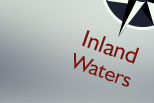



| Home > Browse Selected Topics > Shipwreck Investigations | Franšais | |
This archived Web page remains online for reference, research or recordkeeping purposes. This page will not be altered or updated. Web pages that are archived on the Internet are not subject to the Government of Canada Web Standards. As per the Communications Policy of the Government of Canada, you can request alternate formats of this page on the Contact Us page.
The Atlantic Coast "A Chart of the Atlantic Ocean, Exhibiting the Seat of War Both in Europe and America According to the Discoveries and Regulated by Astronomical Observations," 1780 The Atlantic Coast of Canada consists of the eastern seaboard waters, which extend from the New Brunswick/Maine border in the south to the Arctic Ocean in the north, and the Gulf of St. Lawrence. The Labrador Current, which carries cold water and air, flows south into these waters and meets up with the warm Gulf Stream off of Newfoundland's coast. These conditions form the rich fishing area of the Grand Banks, an area that attracted the first European ships into the region at the end of the 15th century. Sea traffic increased rapidly following these first visits, peaking in the years 1850-1900. The meeting of the Labrador Current and the Gulf Stream produces great dangers for shipping, namely dense and persistent fog into which the Labrador Current deposits heavy ice floes and treacherous icebergs. To navigate in thick fog, captains would post crew members to listen for the sound of waves breaking on the shore. For years, safe passage was made difficult by a lack of lighthouses and simple maps, as well as by the limited nature of the navigational tools available, many of which relied on taking readings from the sun or stars that were often hidden from view. These conditions combined to make shipwrecks almost a certainty. Such is the scale of seafaring disasters in the area that the number of wrecks off of Nova Scotia's coast alone, is estimated to be in the range of 25,000.
ReferencesThe Atlas of Canada -- Break-up of Sea Ice. Natural Resources Canada. The Atlas of Canada -- Map of the Atlantic Provinces. Natural Resources Canada. The Atlas of Canada -- Mapping the Coasts, 1492 to 1874. Natural Resources Canada. Dearborn, Dorothy. New Brunswick Sea Stories: Phantom Ships and Pirate's Gold, Shipwrecks and Iron Men. Saint John: Neptune Publishing Company Ltd., 1998. Galgay, Frank, and Michael McCarthy. Shipwrecks of Newfoundland and Labrador. St. John's: Harry Cuff Publications Ltd., 1987. Marine Heritage Database. Maritime Museum of the Atlantic, 2005. |